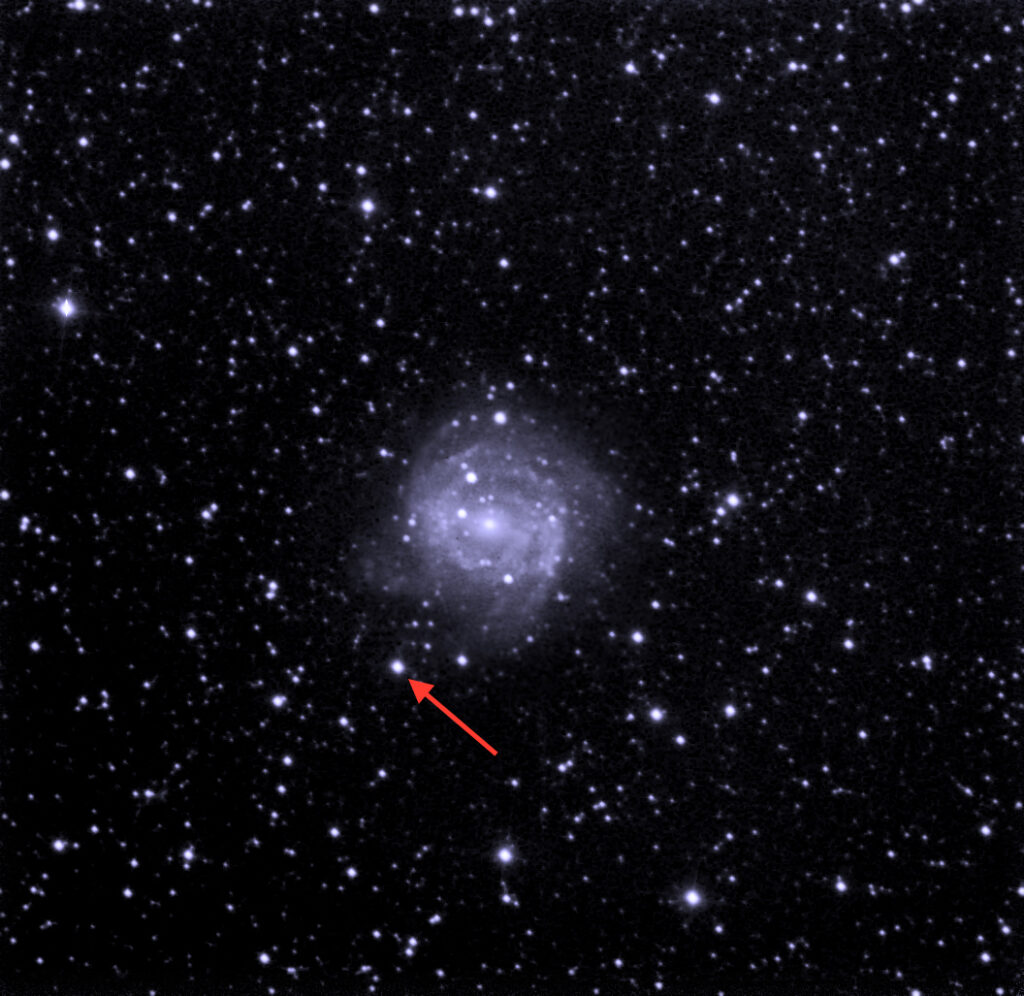On March 10, 2017, a team of astronomers detected a “Type 1a” supernova in galaxy NGC 5643 65 million light years away in the southern hemisphere constellation Lupus (the "wolf"). It is the bright star-like object to which the red arrow is pointing. Of course, though astronomers were only recently made aware of this event, it actually occurred during the Cretaceous period on Earth, toward the end of the Mesozoic Era, when T-Rex roamed the planet.
A Type 1a supernova is a cataclysmic explosion of a white dwarf star in a binary star system as a result of accreting mass from its nearby companion star. When the accreted material increases the white dwarf’s mass to 1.4x the mass of our Sun (the so-called "Chandrasekhar limit") the white dwarf star collapses, significantly increasing pressure and temperature which leads to a runaway fusion of unfused carbon and oxygen in its core, triggering a spectacular eruption having a luminosity for several weeks of 5 billion or more suns.
This supernova occurred in a galaxy in the constellation Lupus (the “wolf"). This is not the first supernova to be detected in this constellation. The first recorded supernova in human history occurred in this same constellation in 1006 AD. It also was the brightest, being clearly visible in daylight, and casting shadows at night, until it dimmed a few months after it first appeared.
March 30, 2017
Location Taken:Siding Springs Observatory, NSW Australila
Conditions of Location: Equipment Used:Planewave 17" corrected Dall-Kirkham telescope, FLI PL4710 camera
Processing Used:10 x 3 minute images luminance
Distance from Location:55 million light years
Constellation:Lupus (the "wolf")
Other Link:
